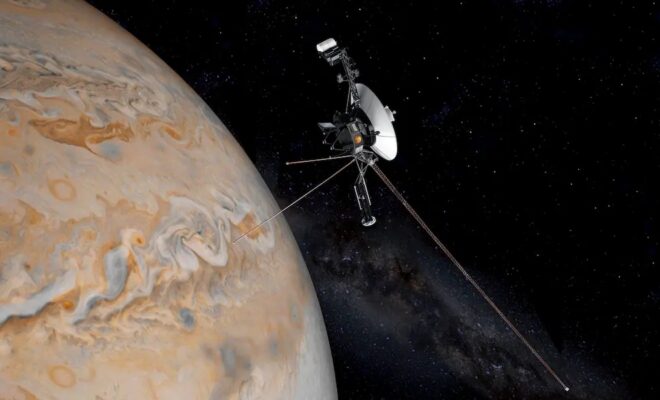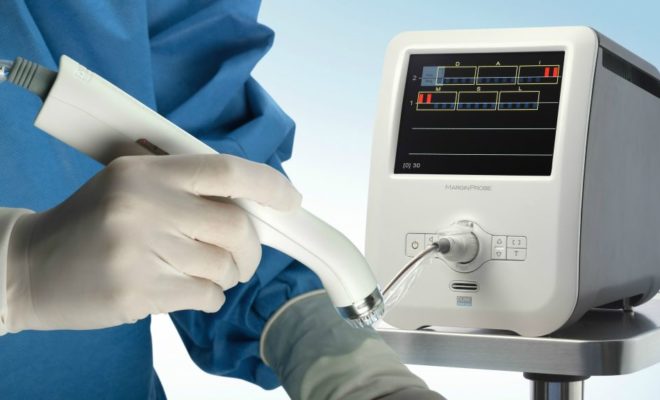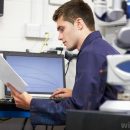20 Facts About the Development of Payloads, Spacecraft, And Instruments

The development, pre-launch, launch, and post-launch phases of Voyager payloads, spacecraft, and instruments are critical to the success of any space mission. Here are 20 facts about these processes:
Development Phase
- Mission Design: The development phase begins with mission design, where scientists and engineers define objectives, requirements, and constraints for the payload or spacecraft.
- Payload Selection: Payloads are chosen based on scientific goals, such as Earth observation, planetary exploration, or astrophysics research.
- Prototyping: Engineers build prototypes to test the functionality and durability of instruments and spacecraft components.
- Simulation and Modeling: Advanced computer simulations and models are used to predict how the payload or spacecraft will perform in space.
- Material Selection: Spacecraft and instruments are built using lightweight, durable materials that can withstand extreme temperatures and radiation.
- Integration Testing: Components are tested together to ensure they work as a system, including thermal, vibration, and vacuum tests.
- Redundancy: Critical systems often include redundant components to ensure mission success in case of failure.
Pre-Launch Phase
- Final Assembly: The spacecraft and payload are fully assembled and integrated with the launch vehicle.
- Environmental Testing: The assembled spacecraft undergoes rigorous environmental testing, including thermal vacuum tests and acoustic tests, to simulate launch and space conditions.
- Launch Readiness Review: A launch readiness review is conducted to ensure all systems are functioning and mission objectives can be met.
- Transport to Launch Site: The spacecraft is transported to the launch site, often under strict security and environmental controls.
- Fueling: The spacecraft is fueled with propellants and other consumables required for the mission.
- Integration with Launch Vehicle: The spacecraft is mounted onto the launch vehicle, and final connections are made.
- Countdown Rehearsal: A dress rehearsal of the launch countdown is conducted to identify and resolve any last-minute issues.
Launch Phase
- Launch Window: Missions have a specific launch window, a timeframe during which the launch must occur to achieve the desired trajectory.
- Liftoff: The launch vehicle ignites and lifts off, carrying the spacecraft and payload into space.
- Stage Separation: The launch vehicle’s stages separate as fuel is depleted, and the spacecraft is propelled into its intended orbit or trajectory.
- Deployment: Once in space, the spacecraft deploys its solar panels, antennas, and other instruments.
Post-Launch Phase
- Initial Checkout: After deployment, the spacecraft undergoes an initial checkout to ensure all systems are functioning correctly.
- Orbit Adjustment: If necessary, the spacecraft performs orbital maneuvers to reach its final orbit or trajectory.
Bonus Facts:
- 21. Ground Station Communication: The spacecraft establishes communication with ground stations to transmit data and receive commands.
- 22. Calibration: Instruments are calibrated to ensure accurate data collection.
- 23. Mission Operations: The mission operations team monitors the spacecraft’s health and performance throughout the mission.
- 24. Data Analysis: Scientists analyze the data collected by the payload to achieve mission objectives.
- 25. End-of-Life Plans: Missions include plans for decommissioning the spacecraft, such as deorbiting or moving it to a graveyard orbit.
These phases ensure that payloads, spacecraft, and instruments are developed, tested, and launched successfully, enabling groundbreaking discoveries and advancements in space exploration.
20 Facts About Global Space Agencies and Human Presence in Low-Earth Orbit
Ensuring a continued human presence in low-Earth orbit (LEO) is a collaborative effort involving global space agencies and private companies. Voyager Space Solutions and other organizations are working together to advance technology, conduct research, and maintain infrastructure in space. Here are 20 facts about their roles and contributions:
- International Space Station (ISS)
The ISS is a collaborative project involving NASA (U.S.), Roscosmos (Russia), ESA (Europe), JAXA (Japan), and CSA (Canada). It has hosted humans continuously since 2000.
- NASA’s Commercial Crew Program
NASA partners with private companies like SpaceX and Boeing to transport astronauts to and from the ISS, reducing reliance on Russian Soyuz spacecraft.
- SpaceX’s Crew Dragon
SpaceX’s Crew Dragon spacecraft has become a key vehicle for ferrying astronauts to the ISS, marking a new era of commercial spaceflight.
- Roscosmos’ Soyuz Program
Russia’s Soyuz spacecraft has been a reliable workhorse for transporting astronauts to the ISS for decades, ensuring continuous human presence in LEO.
- China’s Tiangong Space Station
China’s Tiangong Space Station represents a new player in LEO, with plans to host international astronauts and conduct scientific research.
- ESA’s Contributions
The European Space Agency (ESA) provides modules like Columbus and ATV (Automated Transfer Vehicle) to support the ISS and future LEO projects.
- JAXA’s Kibo Module
Japan’s Kibo module on the ISS is a state-of-the-art laboratory for scientific experiments, contributing to global research in microgravity.
- CSA’s Robotics
Canada’s Canadarm2 and Dextre robotic systems are critical for ISS operations, including maintenance and cargo handling.
- Commercial Space Stations
Companies like Axiom Space and Sierra Space are developing commercial space stations to replace the ISS, ensuring a seamless transition for human presence in LEO.
- Axiom Space’s Plans
Axiom Space plans to attach its commercial modules to the ISS before eventually detaching them to form a standalone space station.
- Sierra Space’s LIFE Habitat
Sierra Space is developing the Large Integrated Flexible Environment (LIFE) habitat, an inflatable module for future space stations.
- Nanoracks’ Starlab
Nanoracks, in partnership with Voyager Space and Lockheed Martin, is developing Starlab, a commercial space station set to launch by 2028.
- Blue Origin’s Orbital Reef
Blue Origin and Sierra Space are collaborating on Orbital Reef, a mixed-use space station designed for research, tourism, and industrial activities.
- Boeing’s CST-100 Starliner
Boeing’s Starliner spacecraft is another vehicle developed under NASA’s Commercial Crew Program, aiming to transport astronauts to LEO.
- Russia’s Next-Gen Space Station
Roscosmos plans to launch its own space station, ROSS, after the ISS is decommissioned, ensuring Russia’s continued presence in LEO.
- India’s Gaganyaan Program
India’s ISRO is developing the Gaganyaan spacecraft to send astronauts to LEO, marking its entry into human spaceflight.
- UAE’s Space Ambitions
The UAE’s Mohammed bin Rashid Space Centre is collaborating with global partners to train astronauts and conduct research in LEO.
- Private Astronaut Missions
Companies like SpaceX and Axiom Space are enabling private astronaut missions to the ISS, opening LEO to non-professional astronauts.
- Space Tourism
Space tourism initiatives by Virgin Galactic, Blue Origin, and SpaceX are expanding access to LEO, fostering public interest in space exploration.
- International Collaboration
Global partnerships, such as the Artemis Accords, promote cooperation in LEO and beyond, ensuring peaceful and sustainable space exploration.
Bonus Facts:
- 21. Microgravity Research: LEO provides a unique environment for experiments in biotechnology, materials science, and fluid dynamics.
- 22. Space Debris Mitigation: Agencies and companies are developing technologies to track and remove space debris, ensuring the safety of LEO operations.
- 23. Lunar Gateway: NASA’s Lunar Gateway will serve as a staging point for missions to the Moon and Mars, with contributions from ESA, JAXA, and CSA.
- 24. Space-Based Manufacturing: Companies are exploring in-space manufacturing in LEO to produce advanced materials and pharmaceuticals.
- 25. Educational Outreach: Space agencies and companies use LEO missions to inspire students and promote STEM education worldwide.
By working together, global space agencies and companies are ensuring a continued human presence in LEO, advancing scientific research, fostering international collaboration, and paving the way for future exploration of the Moon, Mars, and beyond.












